Best 3/4 acoustic guitars 2025: Portability and playability from Taylor, Yamaha, and more
Perfect for beginners and seasoned professionals alike, 3/4 acoustics make great songwriter guitars or for players on the go
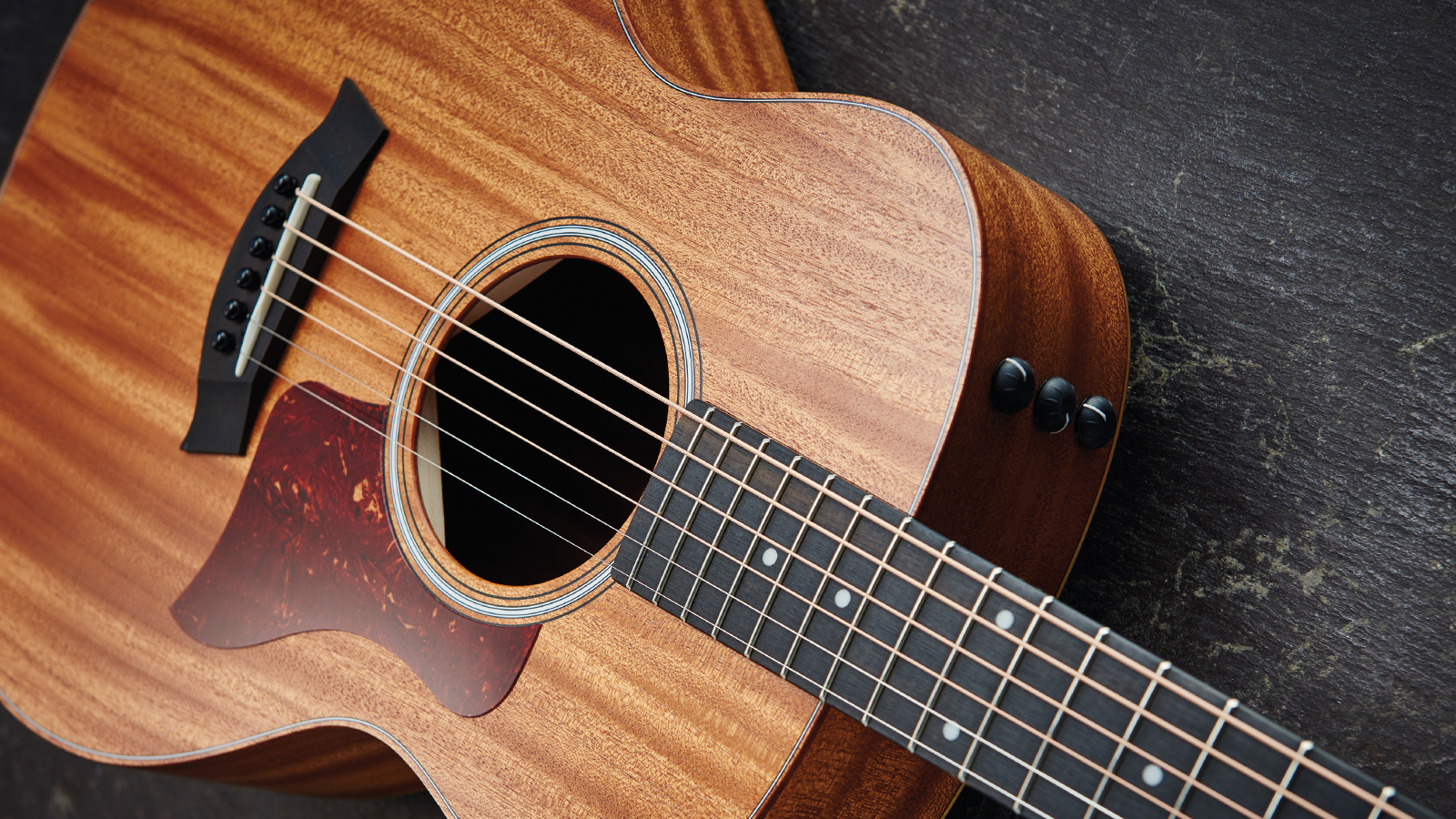
It used to be that the best 3/4 acoustic guitars were for beginner guitar players only. But thanks to the marvels of modern build techniques, these pocket-rocket acoustics can more than compete sonically and tonally with the big boys.
For some, it’s nice to just have a smaller acoustic lying around the house, ready to pick up whenever inspiration strikes. For others, it’s the perfect gigging guitar that goes wherever you go thanks to its diminutive dimensions. Many professional guitarists use acoustic guitars as a start point for their songwriting and the best 3/4 acoustic guitars are the perfect companion, whether you’re writing your first songs or your next opus.
Best 3/4 acoustic guitars: MusicRadar’s Choice
The Taylor GS Mini-e Mahogany is not just the best 3/4 acoustic guitar, it’s one of the best acoustic guitars you can buy, period. With its delightful natural resonance, sparkly high-end and controlled mids, there’s a reason players like Mac DeMarco and Damon Albarn use them professionally.
If a Taylor is a little out of your price range, then the Yamaha JR1 FG 3/4 acoustic is the perfect option for beginners or those on a budget. It’s got fantastic tonal characteristics and easy playability, as well as coming with all the accessories you need to get up and running.
Best 3/4 acoustic guitars: Product guide
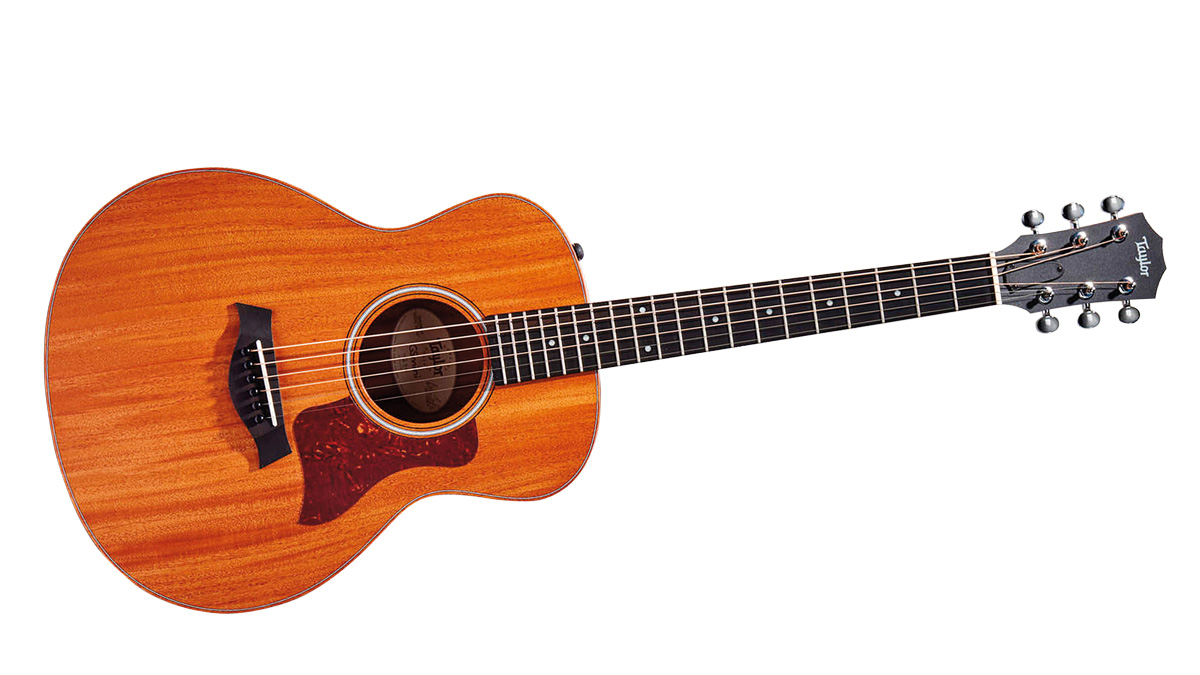
Specifications
Reasons to buy
Reasons to avoid
The Taylor GS Mini-e Mahogany is really a thing of beauty, stuffing full-size Taylor tone into a conveniently sized package. It’s a great option for the beginner player looking to make their first strides with the instrument, with enough quality to satisfy even professional guitarists.
The smaller scale makes it effortlessly playable, but it keeps the string spacing of its full-sized brethren so it won’t feel too alien to those who’ve played a Taylor before. The Ebony fretboard is smooth and features a wood grain unique to the guitar.
Thanks to the Mahogany top it’s got a very warm tone overall, with a depth that belies its smaller stature. The onboard electronics offer treble and bass controls that allow you to sculpt its natural character when you plug in for your next gig.
Read our full Taylor GS Mini-e Mahogany review
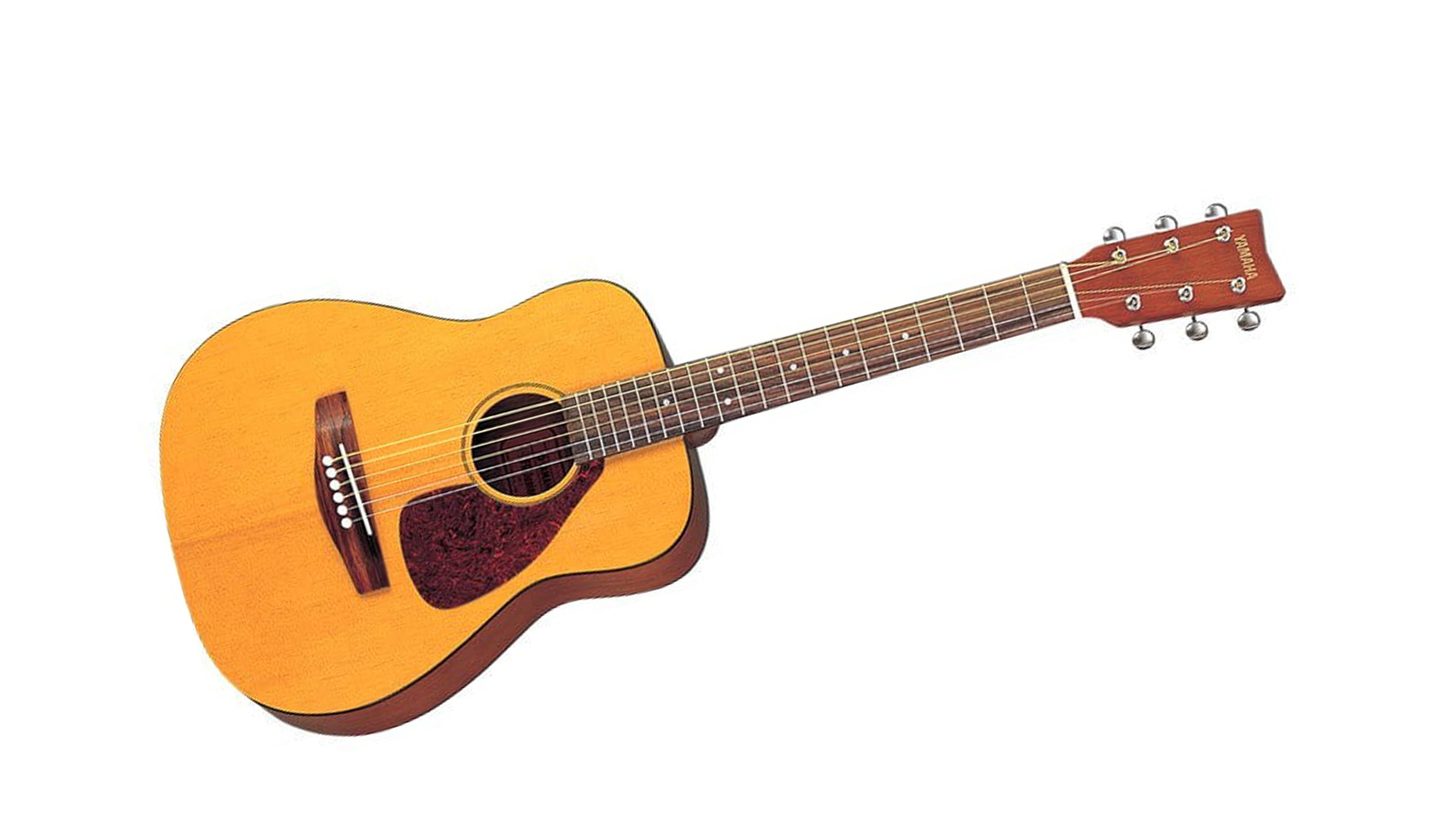
2. Yamaha JR1 FG 3/4 Acoustic Guitar
Our expert review:
Specifications
Reasons to buy
Reasons to avoid
For beginners or those on a budget, you can’t do much better than the Yamaha JR1 FG. It delivers outstanding tone and playability for the money, coming bundled with all the accessories you’ll need to get your guitar journey started.
The slim neck makes this guitar incredibly playable, combining well with the short scale to provide the perfect platform for beginner and younger players. A rosewood fretboard offers a smooth playing feel for your fretting hand.
In terms of tone, like most 3/4 acoustic guitars it suffers a little in the low end. That said it’s got plenty of brightness in the mid and upper ranges, and a projection that’s more than suitable for the vast majority of playing scenarios a beginner will encounter.
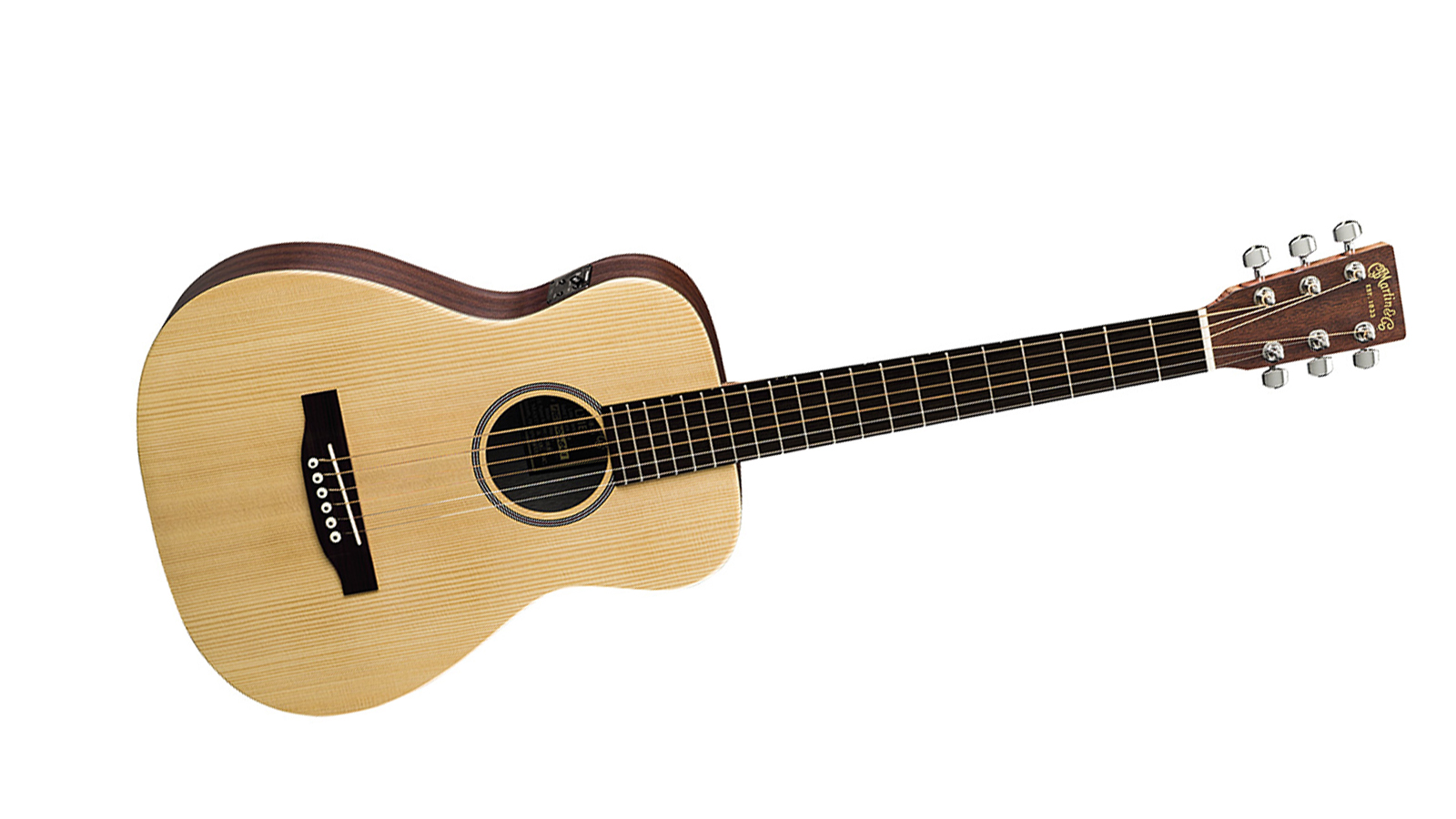
Specifications
Reasons to buy
Reasons to avoid
The Martin LX1E ‘Little Martin’ gives you a huge sound in a small package. It’s louder than a lot of other 3/4 acoustic guitars thanks to its X-bracing and solid top, delivering a quality that will meet the needs of beginners and pro players alike.
If you’re coming from a full-size acoustic, you’ll find the neck width roughly the same as a regular Martin. Combined with the short scale, it gives the guitar excellent playability all across the FSC Certified Richlite fretboard.
Unplugged it offers an articulate and defined sound that is surprisingly loud for its size. The Fishman Sonitone onboard electronics are fantastic as well, really allowing the guitar's natural tone to shine through.
Read our full Martin LX1E ‘Little Martin’ review
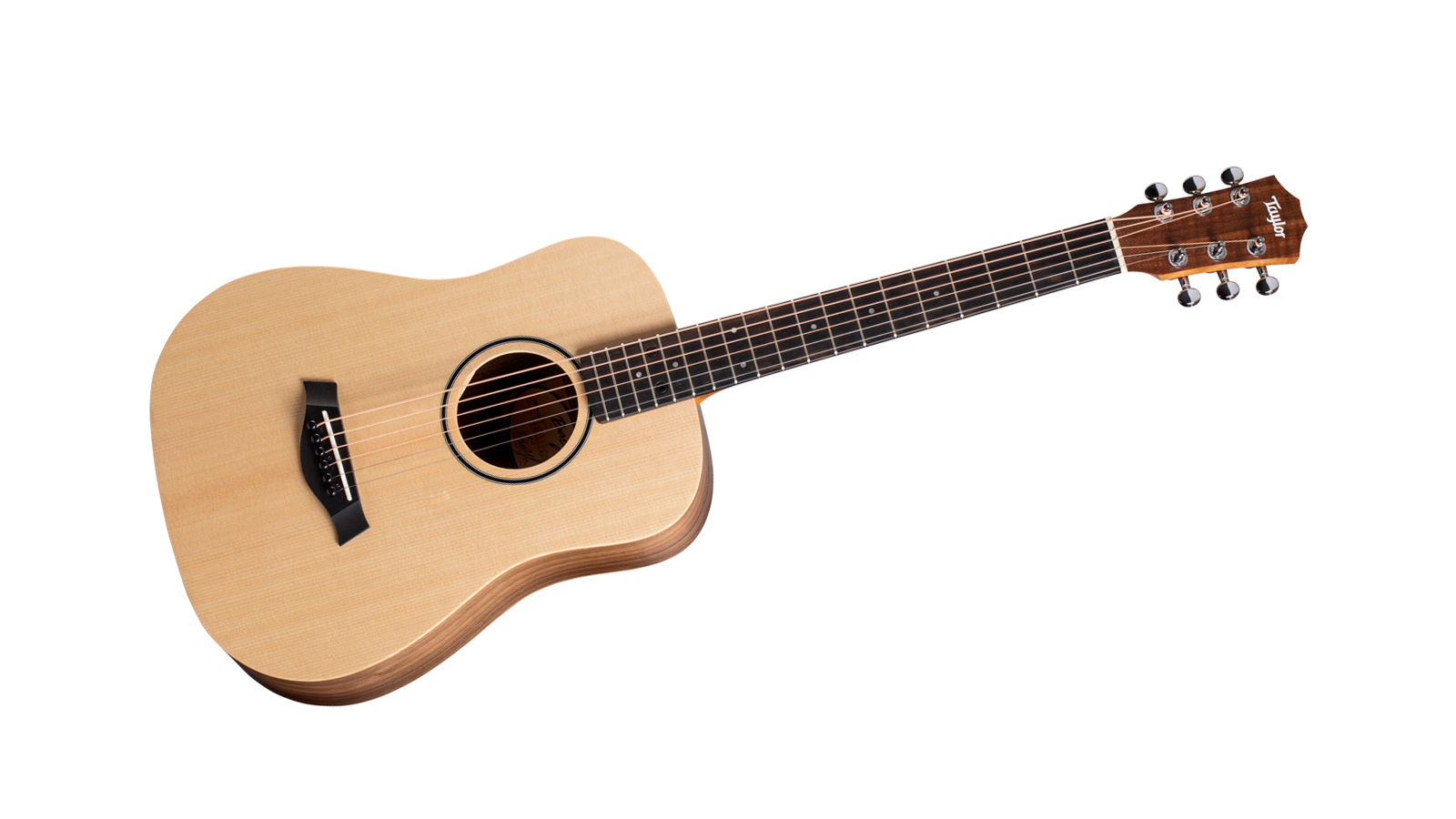
4. Taylor BT1 ‘Baby Taylor’ 3/4 Acoustic Guitar
Our expert review:
Specifications
Reasons to buy
Reasons to avoid
Despite its moniker, the Taylor BT1 ‘Baby Taylor’ is a very grown-up guitar. It delivers a tone and playability that will suit professionals and apprentices equally well, in a high-quality package from one of the behemoths of acoustic guitar building.
A small neck heel allows great access to the upper frets and it comes with a low action out of the box, making it easy to fret for beginner guitar players. It’s got great dynamic range too, reacting equally well to the soft touch of fingerstyle as it does hard-strummed chords.
Despite its small size, it doesn’t suffer from any boxiness in tone, delivering a full and rich sound. The lows are tight, mids clear and highs crisp, and the resultant projection is really quite good for a guitar of this size.
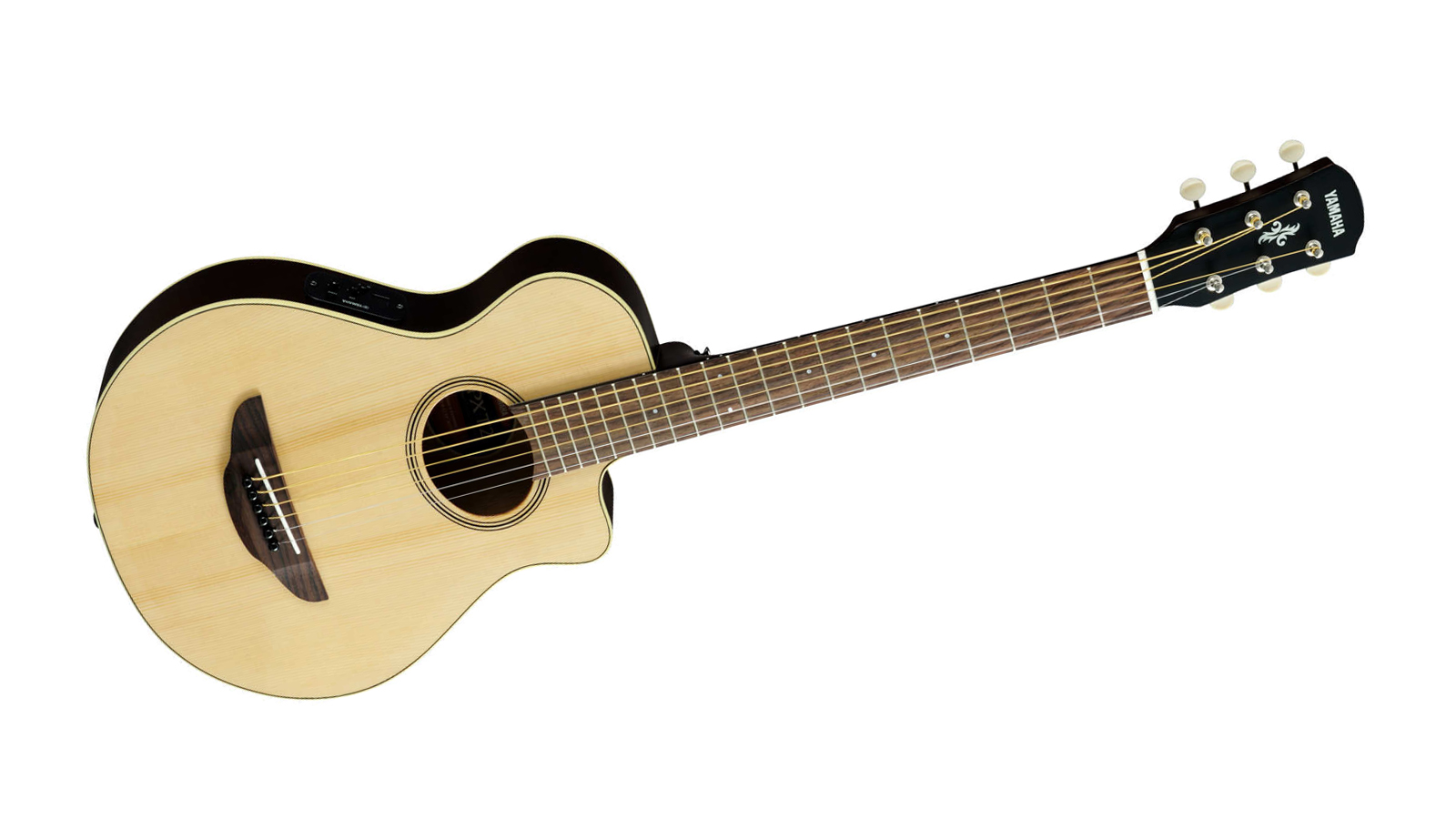
5. Yamaha APXT2 3/4 Acoustic Guitar
Our expert review:
Specifications
Reasons to buy
Reasons to avoid
The Yamaha APXT2 is marketed as a travel guitar, but it’s so much more than that. Featuring a super fast playing neck that will suit those used to electric guitars, as well as excellent onboard electronics, it’s a great guitar for gigging too.
Thanks to its cutaway design you’ve got easy access to the upper frets, and the slim neck profile is a joy to play on. The fretboard is a similar width to a full-size guitar, so will feel familiar to players who already have some experience under their belt.
Despite the thin body depth, it’s got more than enough resonance to fill the room when you play it unplugged. When you plug it in, the onboard pickup delivers a warm and pristine acoustic guitar tone, perfect for live performances.
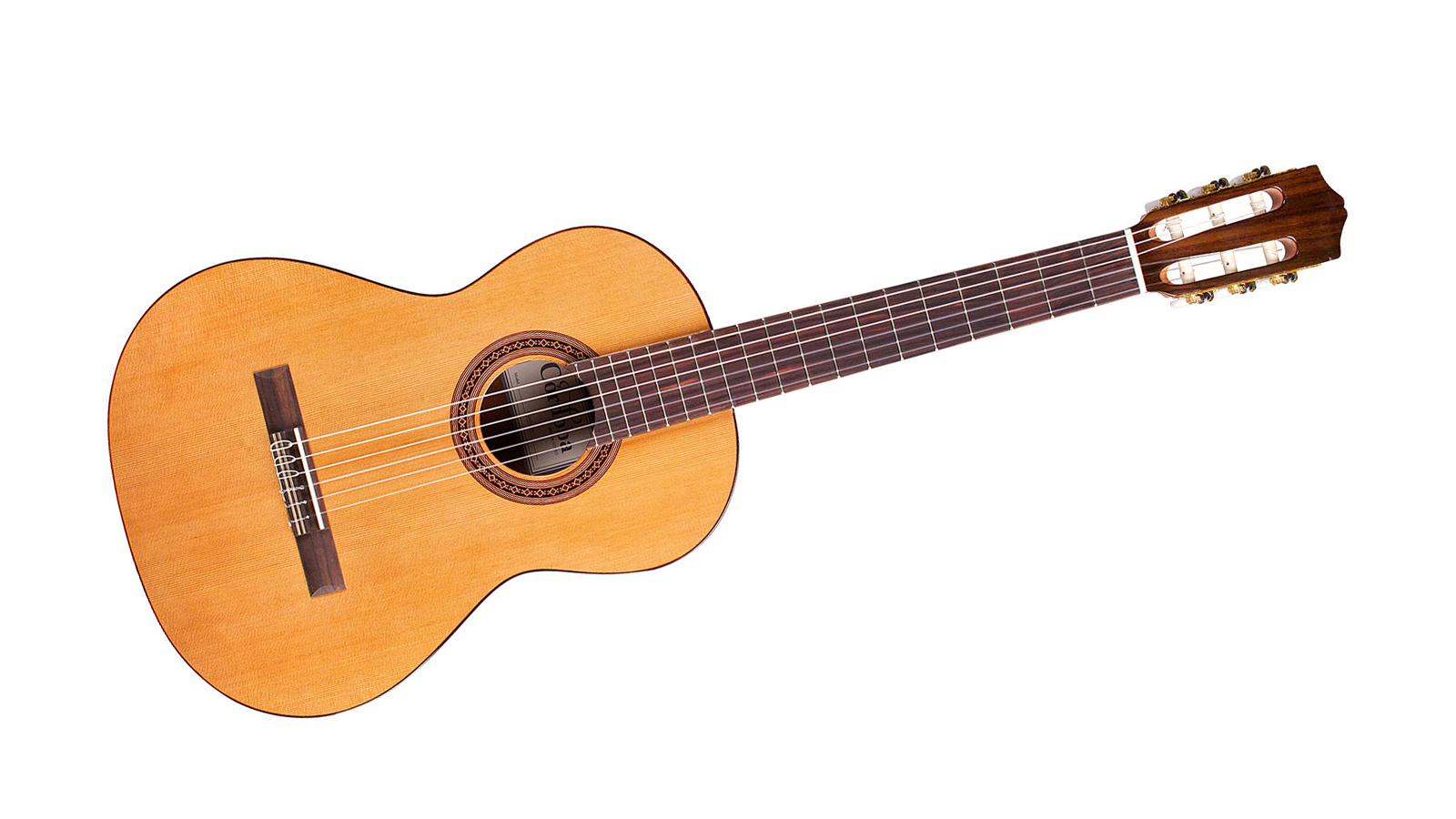
6. Cordoba Cadete 3/4 Classical Acoustic Guitar
Our expert review:
Specifications
Reasons to buy
Reasons to avoid
The Cordoba Cadete 3/4 Classical is a brilliant option for those looking to take the classical guitar route. Its soft nylon strings make it much easier for beginners to play for longer, but this guitar has a feature set that makes it great for more seasoned players too.
A comfortable, Mahogany neck delivers a stable playing platform that’s perfect for fingerstyle. The flat-radius Rosewood fretboard encourages classical-style playing, but you’ll still find plenty of other styles working well here.
A solid Cedar top is a surprise at this price point, delivering some serious sonics which makes it comparable to full-size classical acoustic guitars. It resonates beautifully, offering up a delightful tonality no matter your playing style.
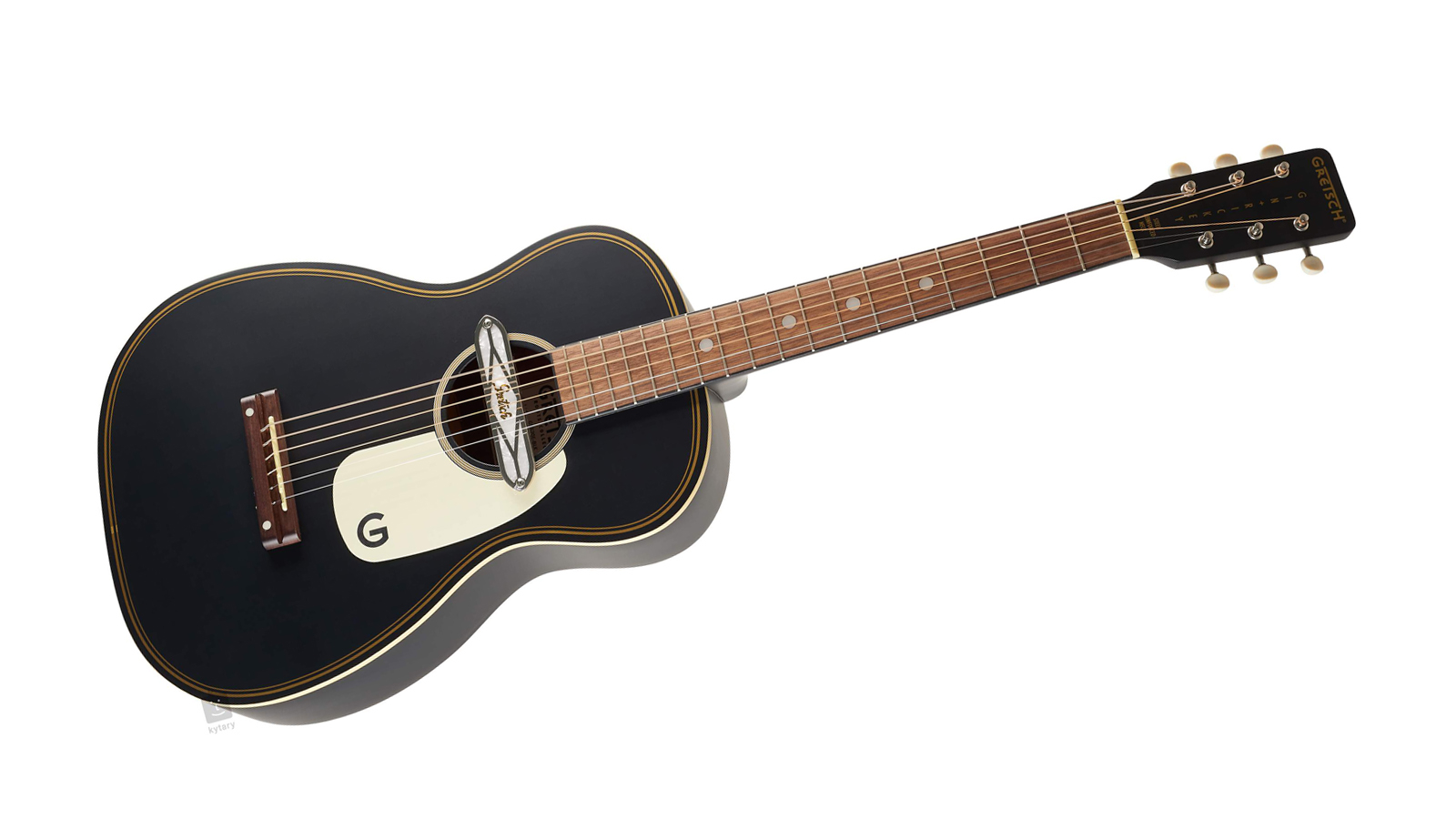
7. Gretsch G9520E ‘Gin Rickey’ 3/4 Acoustic Guitar
Our expert review:
Specifications
Reasons to buy
Reasons to avoid
The Gretsch G9520E Gin Rickey has been quietly developing a bit of a cult following with guitarists old and new. Standing out from the crowd thanks to its distinctive look, it also packs a serious punch with its unique Gretsch Deltoluxe soundhole pickup.
Notwithstanding the great electronics, this guitar’s unplugged tone is incredible considering the price point. It offers a great low-end response for the size, taking open chords particularly well with an even note definition across the Walnut fretboard.
Plug it in and this guitar turns into something of a beast. The pickup offers electric guitar-like qualities, making it great for bluesy playing and slide work. Don’t let the price tag fool you, this guitar is a serious instrument.
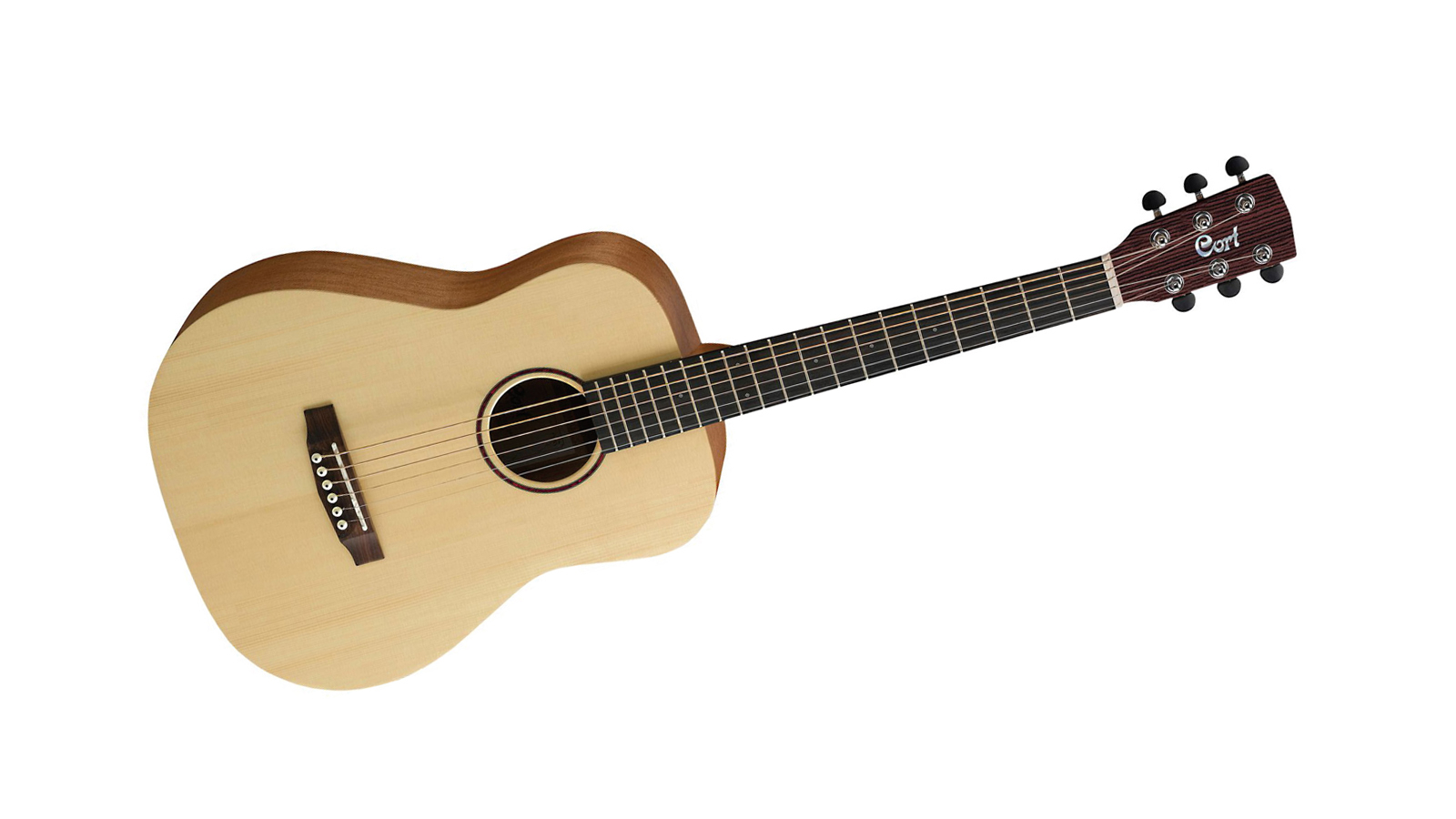
8. Cort Earth Mini OP 3/4 Acoustic Guitar
Our expert review:
Specifications
Reasons to buy
Reasons to avoid
The Cort Earth Mini OP has a surprising spec considering its price, with features you’d normally find on models two or three times the price. For a beginner guitar player, you’ll be hard pushed to find such a high-quality guitar elsewhere.
It features an unusual soft ‘V’ shaped neck, which helps new players fret chords with ease. The neck profile provides a great platform for speedy licks from those that are more experienced and, despite the extra small scale length, it doesn’t feel cramped at all.
Another great design feature is the smaller than normal sound hole. This forces the air resonating through the guitar body to travel faster, resulting in a voice that far exceeds its small size.

9. Fender Sonoran Mini 3/4 Acoustic Guitar
Our expert review:
Specifications
Reasons to buy
Reasons to avoid
The Fender Sonoran Mini is a fantastic 3/4 acoustic that offers great value for money and time-tested Fender build quality. Despite being best known for its electric guitars, the Sonoran Mini proves Fender knows what it's doing when it comes to acoustics too.
The Walnut fretboard feels wonderful under your fingers and the Sonoran Mini features the ever-popular Fender ‘C’ shape neck profile. It gives you the best of both worlds in terms of speed for acoustic guitar licks and heft for chord work.
With a Mahogany back and sides and spruce top, you’re getting a classic combo of tonewoods that will suit a wide variety of musical genres. The pear shape of the body ensures great volume for a 3/4 acoustic.
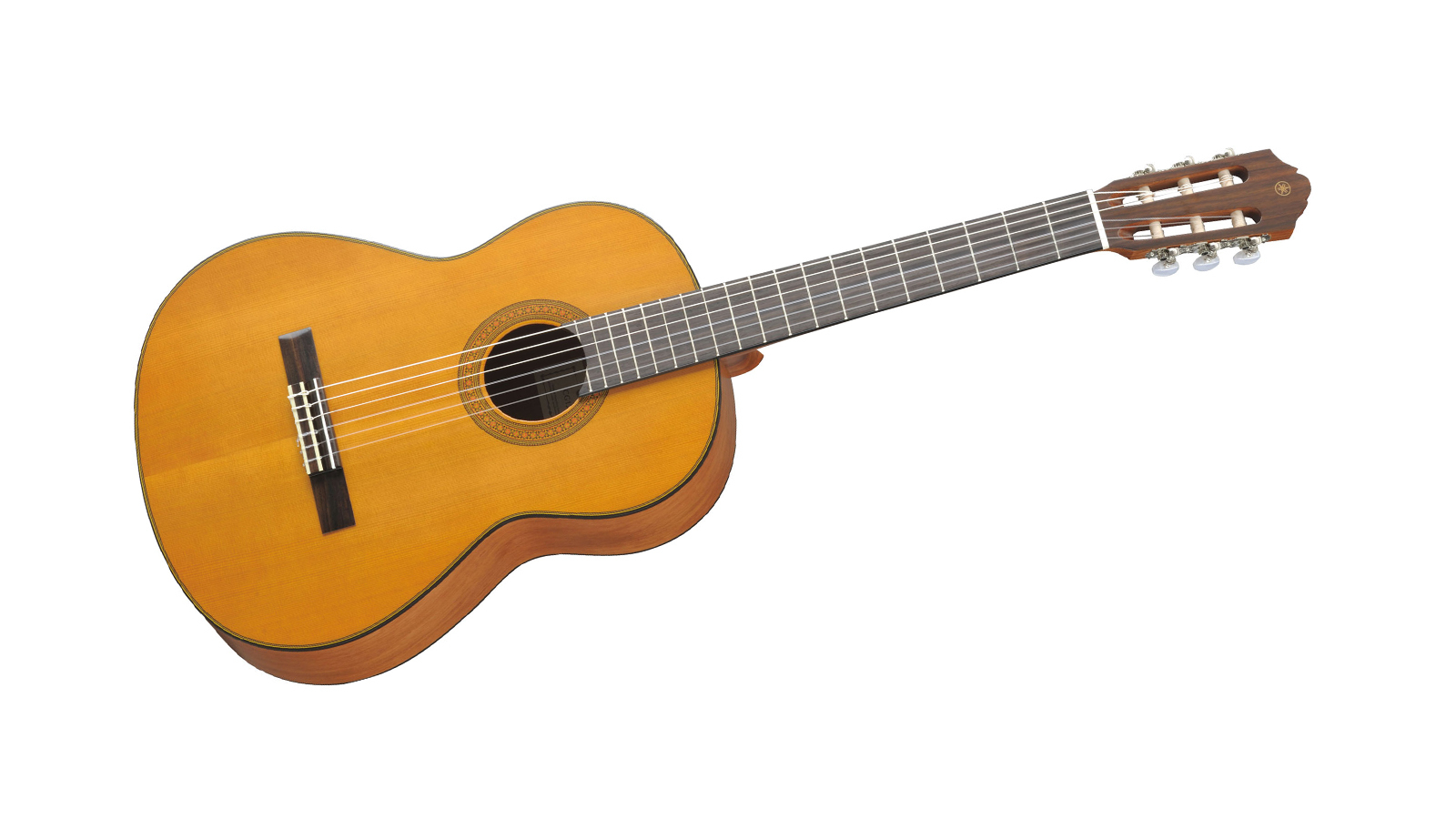
10. Yamaha CS40 II Classical 3/4 Acoustic Guitar
Our expert review:
Specifications
Reasons to buy
Reasons to avoid
The archetype for beginner classical guitars across the globe, Yamaha’s CS40 II is a staple in educational institutions worldwide. It offers excellent playability alongside surprisingly good sound, despite its small price tag.
The flat-radius fretboard is really comfortable to play thanks to the shorter scale length. Its Rosewood construction is nice and smooth, combining with the nylon strings well to deliver easy playability.
Sonically you get a surprising amount of volume from it, with a really nice tonal balance. It’s well suited to chord work just as well as it is fingerstyle. The spruce top ensures plenty of high-end snap when you strum with a pick.
Best 3/4 acoustic guitars: Buying advice
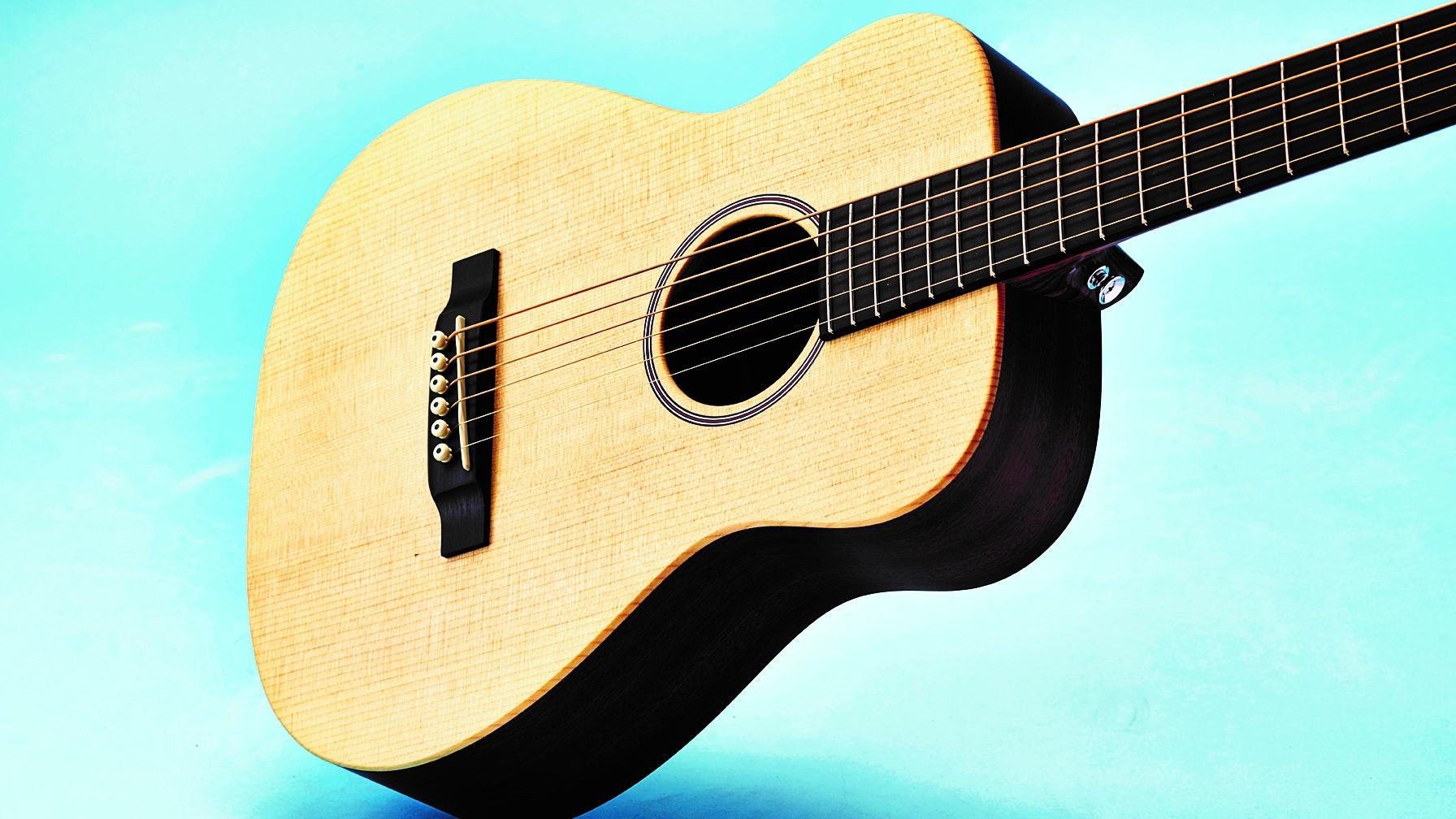
What is a 3/4 acoustic guitar?
When we talk about 3/4 acoustic guitars there’s something of a misnomer here. The term ‘3/4’ doesn’t actually refer to the physical size of the guitar, but something called scale length. Scale length is the distance between the nut of the guitar and the bridge. It affects the tension on the strings, the distance between the strings and the fretboard, as well as the distance between the frets. This last point is of particular importance: due to the shorter scale length of a 3/4 acoustic guitar, the space between the frets is smaller resulting in an easier playing experience for beginner guitarists or those with smaller hands.
What are 3/4 acoustic guitars typically made of?
Like their full-sized brethren, the best 3/4 acoustic guitars rely on a combination of wood types to generate their sound. The back and side wood will typically be composed of warmer-sounding wood types such as Mahogany, Sapele or Basswood.
The top wood is where the magic happens as this is the part that resonates in sympathy with the strings to create an acoustic guitar’s sound. For the majority of acoustic guitars, you will find Sitka Spruce (or one of its many variants) here, which delivers a bright, snappy sound that enhances the natural projection of the guitar.
It’s less common, but you can also find Mahogany top woods or, on occasion, more exotic choices like Koa or Cedar. What you choose is entirely down to personal preference, but there’s a reason that most guitars use a Spruce top wood as it offers the best tonal balance for a wide variety of playing styles.
Related buyer's guides
MusicRadar's got your back
- Want something even smaller? These are the best ukuleles
- The best electric guitars for beginners: start playing today
- The best acoustic guitars for beginners: top beginner acoustic guitars
- Freshen up with the best acoustic guitar strings
Get the MusicRadar Newsletter
Want all the hottest music and gear news, reviews, deals, features and more, direct to your inbox? Sign up here.

Matt is a Junior Deals Writer here at MusicRadar. He regularly tests and reviews music gear with a focus on audio interfaces, studio headphones, studio monitors, and pretty much anything else home recording-related. Matt worked in music retail for 5 years at Dawsons Music and Northwest Guitars and has written for various music sites including Guitar World, Guitar Player, Guitar.com, Ultimate Guitar, and Thomann’s t.blog. A regularly gigging guitarist with over 20 years of experience playing live and producing bands, he's currently studying Sound Engineering and Music Production at Spirit Studios in the UK.
“Beyond its beauty, the cocobolo contributes to the guitar’s overall projection and sustain”: Cort’s stunning new Gold Series acoustic is a love letter to an exotic tone wood
“Your full-scale companion. Anytime. Anywhere… the perfect companion to your full-size Martin”: Meet the Junior Series, the new small-bodied, travel-friendly acoustic range from Martin